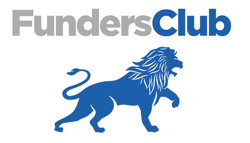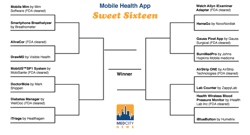

The following eight companies have joined our campus community within the past few months. Welcome! We look forward to hearing more about your work.


The following eight companies have joined our campus community within the past few months. Welcome! We look forward to hearing more about your work.


“Transformation” is the best description of what is happening in health care right now. We are seeing historic changes in how health care is administered in the United States—with increased focus on quality of care versus just paying for a service. We are seeing changes in how people can enroll in health insurance—with the upcoming establishment of a new market place that will help more people get insured in this country than ever before. And, we are seeing changes in how people understand and make decisions about their own health—with an increasing number of tools and services becoming available to help individuals access health information and manage their own personal health data.


As the CEO of Pulse8, John Criswell works with health insurance exchanges and long-term care facilities on big data and analytics, which gives him a purview into the back-end integration required for states and the federal government to setup HIXs. Yet, he’s optimistic that the gvoernment will meet the October 1, 2013 deadline.
Government Health IT Editor Tom Sullivan spoke with Criswell about the complexity of standing up HIXs, how the exchanges might fare come October, and the overarching opportunities that both HIX and health information exchanges will create as they amass mammoth data sets.


No action is good action. At least for online investment platform the Funders Club that today received a ‘no-action letter’ from the SEC stating that it will not recommend enforcement action.
The letter is a green light for the FundersClub and validation that its investment model is legal. The news is significant for the venture capital and finance industries, as well as startups looking for more flexible methods of fundraising.


The Congressional hearings debating the regulatory framework for mobile health devices and apps made me think about how we view mobile health apps and the criteria we use to determine what makes some better than others.
And as we all think in terms of the NCAA college basketball tournament around this time, I thought we would do a mini tournament using mobile health apps.


As we come to the close of Q1 of 2013, LSN has compiled some insight into three of the hottest subsectors being targeted by investors in the medical technology space. New technologies are surfacing that are changing treatment philosophies, and more importantly, medtech is attracting a whole new class of investors such as corporate venture from the consumer electronics, digital media, and telecom space. Here are the three trend areas that are changing the world from the medtech investor perspective:


The Maryland Venture Fund has awarded $300,000 to Adlyfe, a Rockville diagnostic test developer, as part of the state’s InvestMaryland program.
Adlyfe, which is developing an early detection test for Alzheimer’s disease, is also receiving a $200,000 grant from the Maryland Biotechnology Center.


This the title [paraphrased] of a keynote given last week by Jonathon Bush, the CEO of AthenaHealth, at the Xconomy Mobile Madness conference in Cambridge, Ma. What follows are my notes from the speech. The ideas are Jonathon’s. I really like what he’s saying and mostly agree, and he puts it very well.
AthenaHealth’s base business is medical practice billing in the cloud. This is an example of technology-enabled transformation of the health care business system, which we believe will be a big opportunity for entrepreneurs going forward. Founded in 1997, AthenaHealth is now a successful public company (ATHN).*